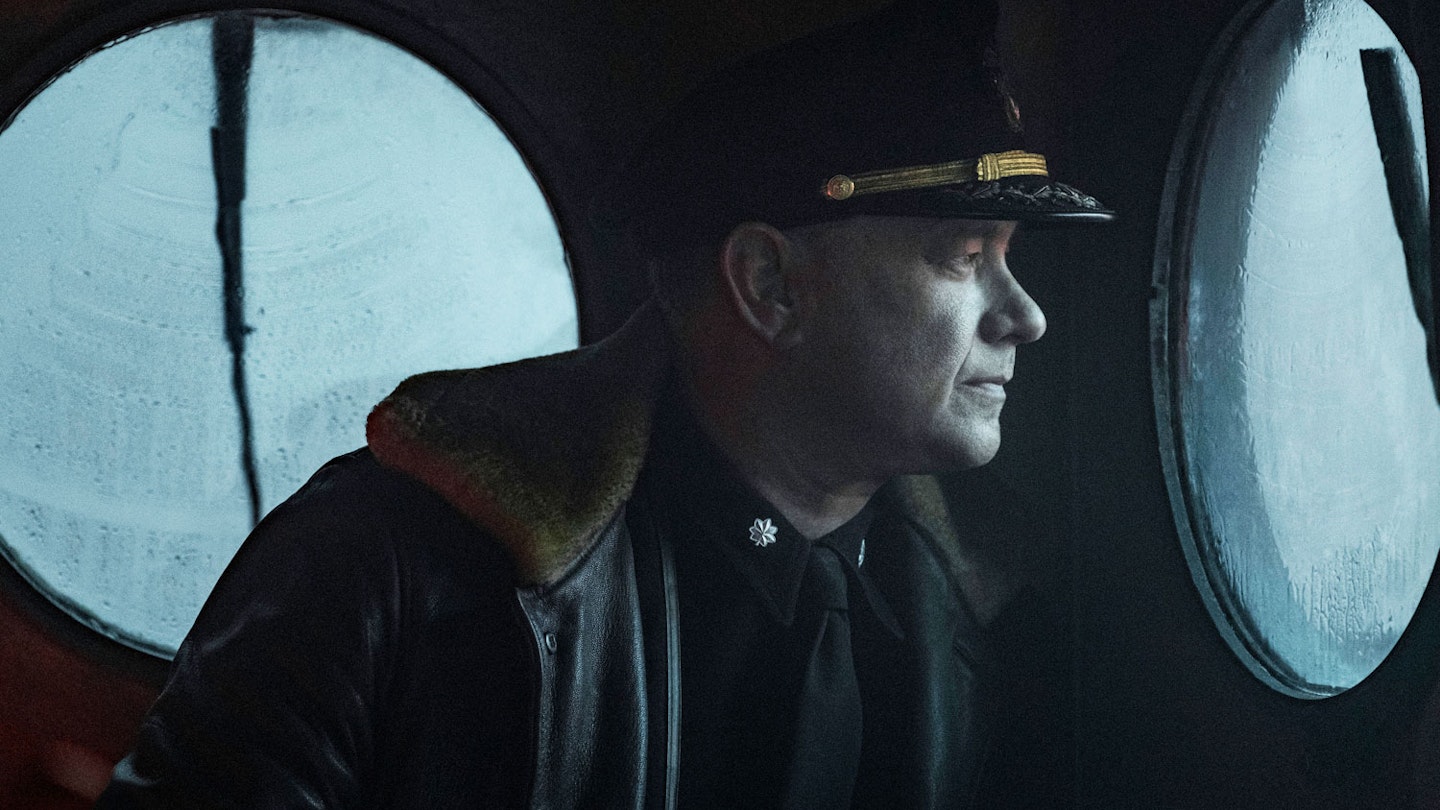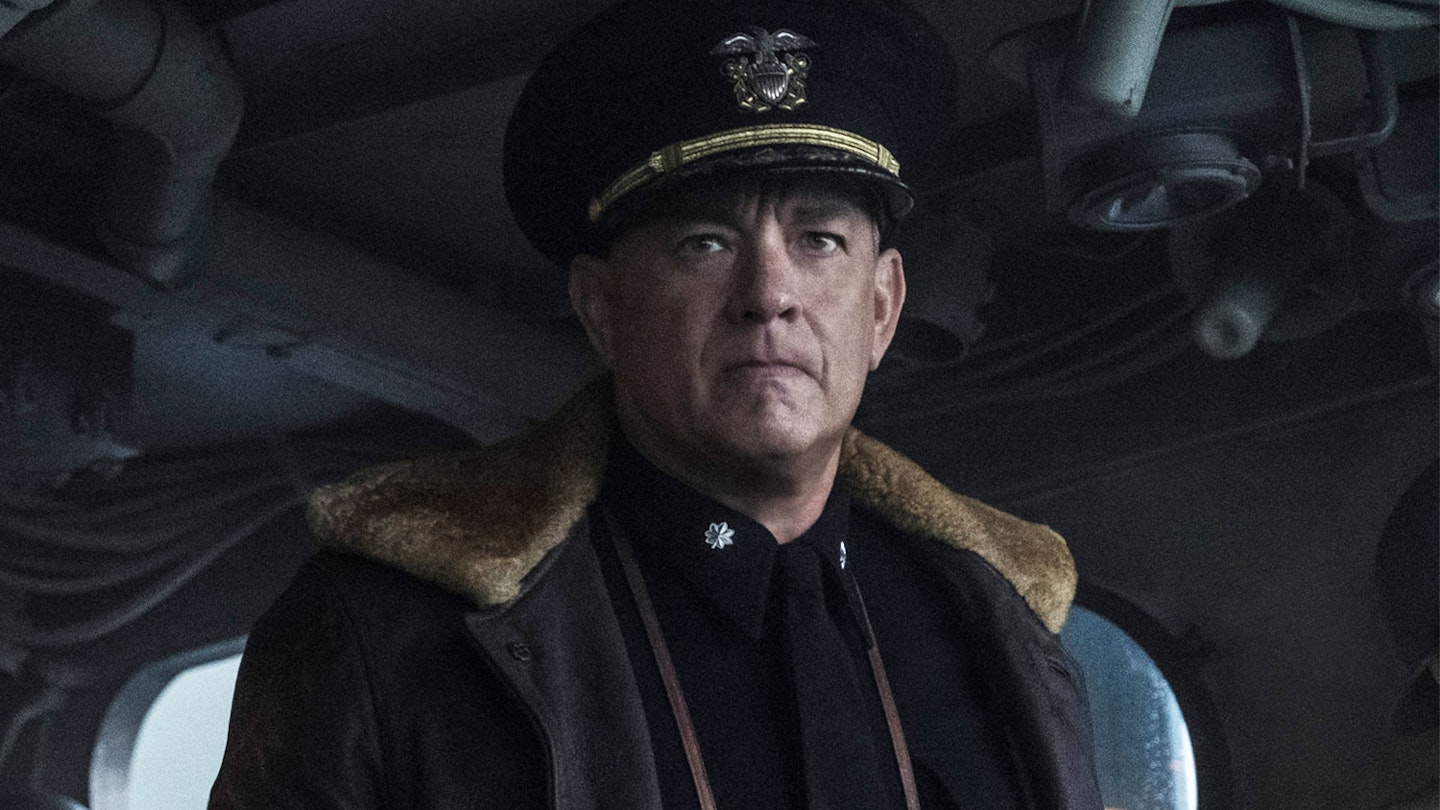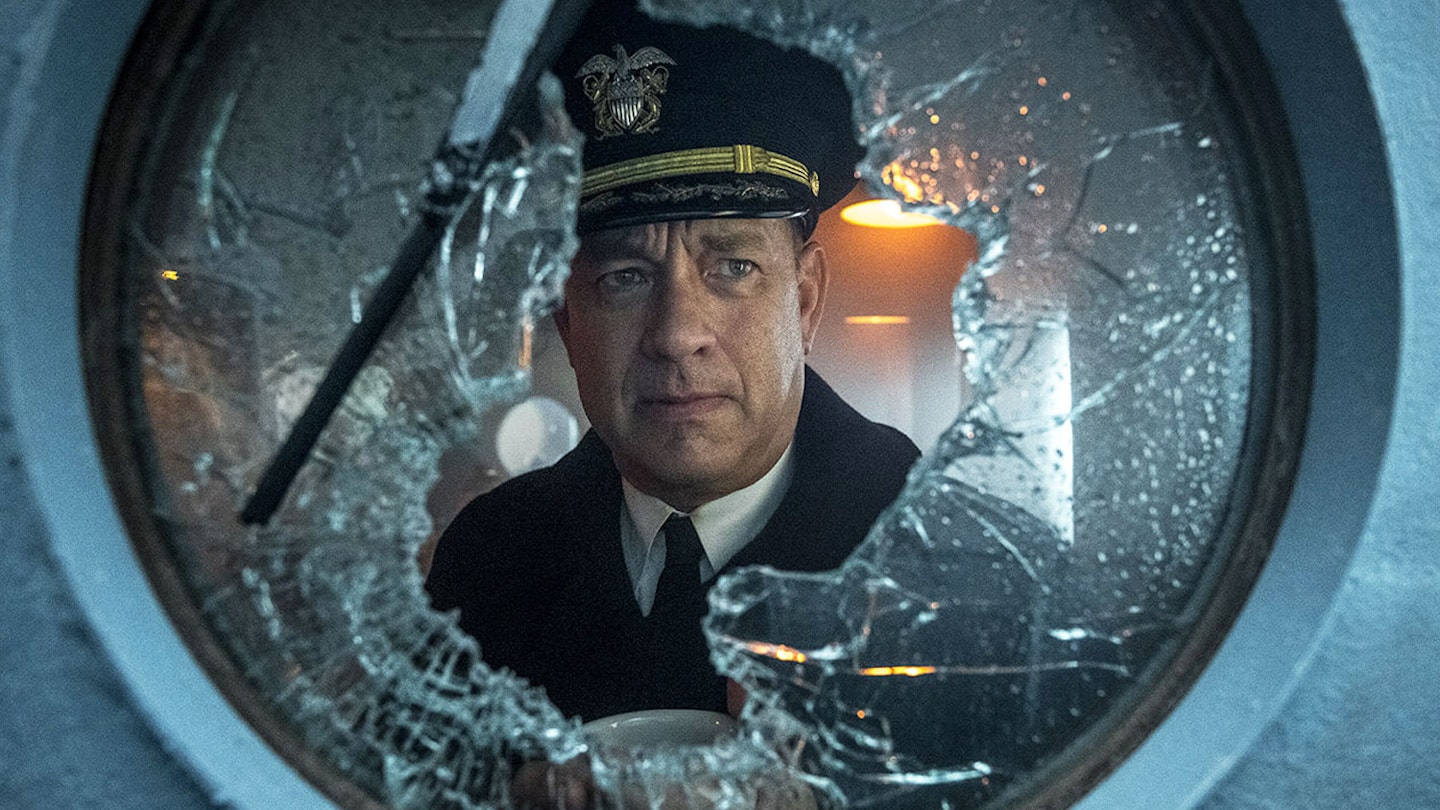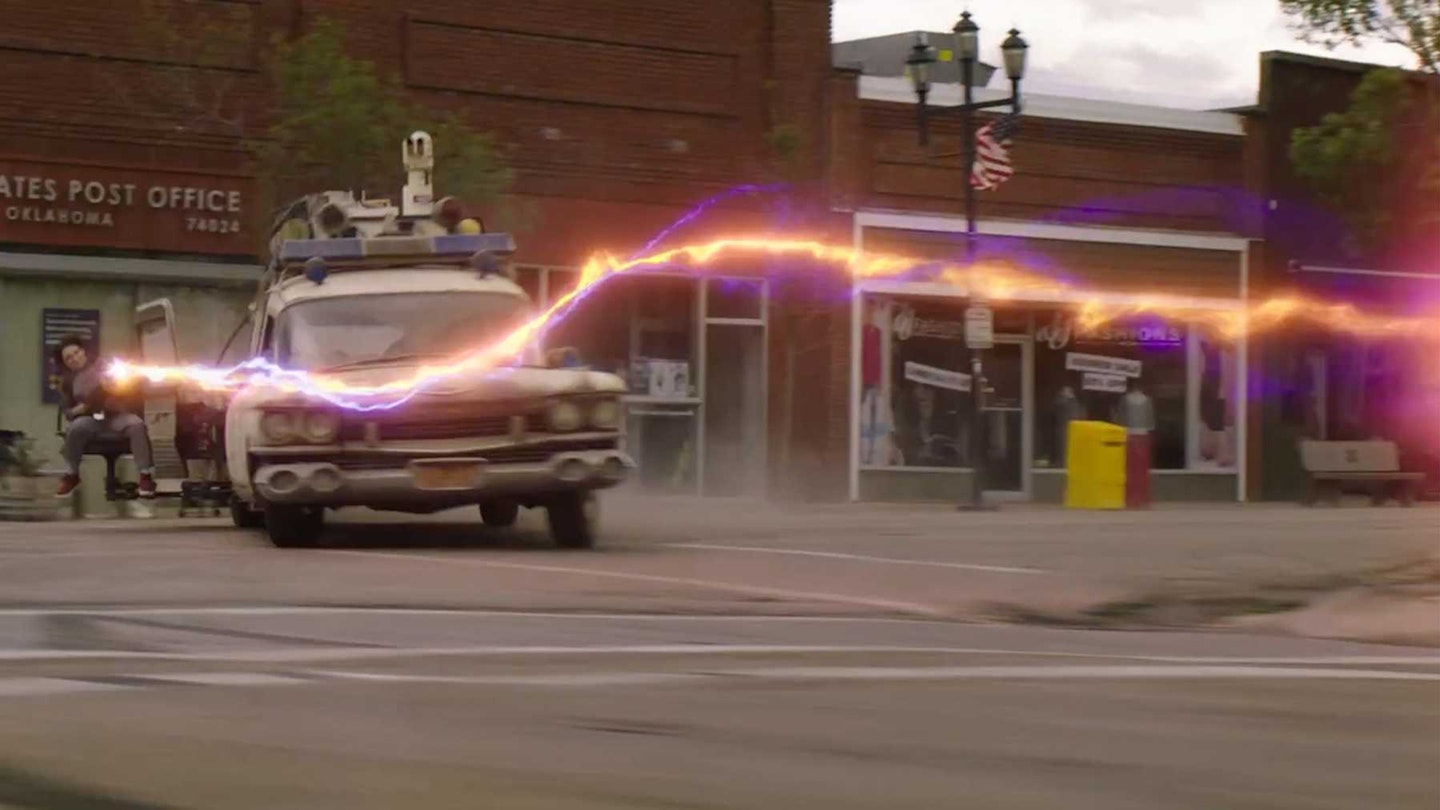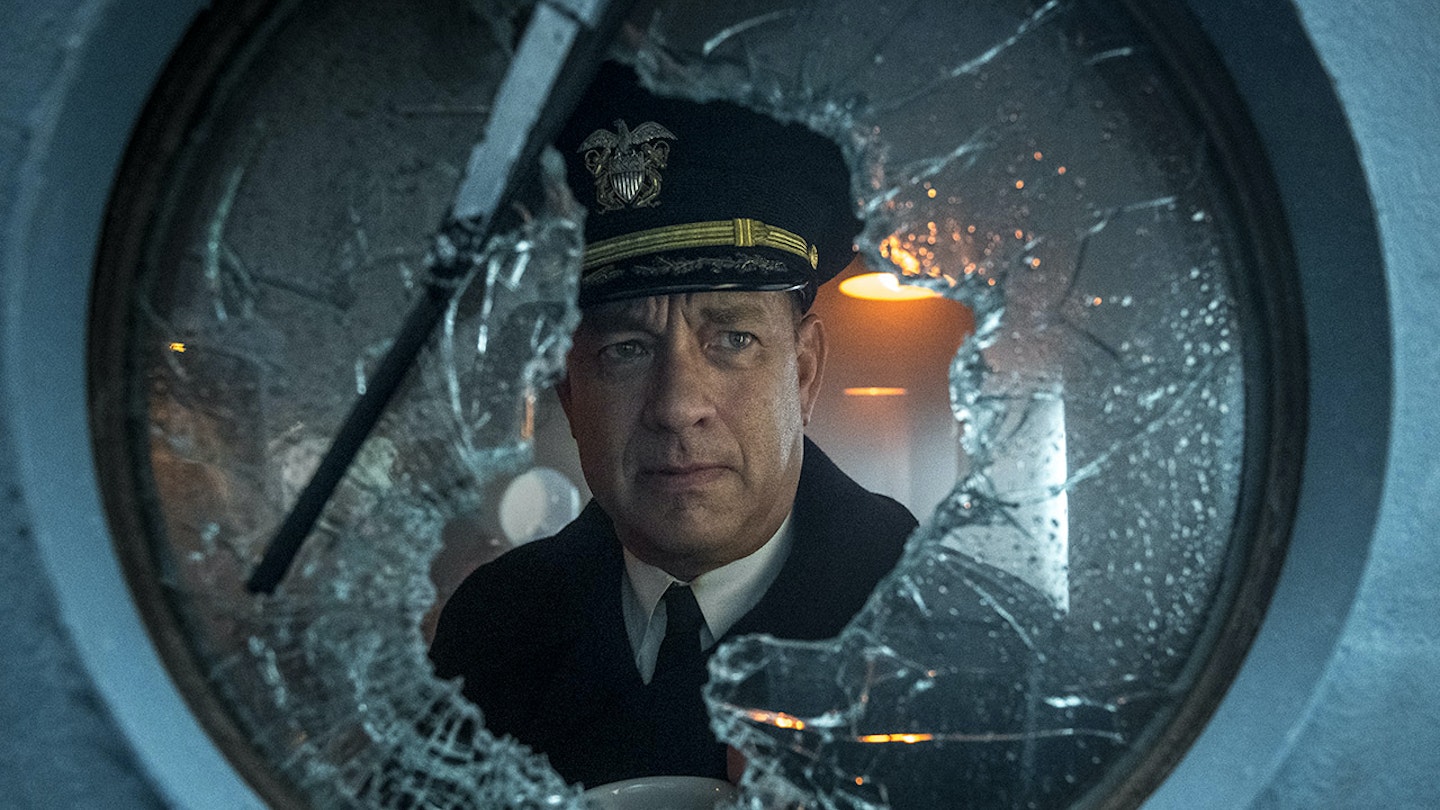Tom Hanks has made a career out of playing an ordinary, decent man placed in a situation of extraordinary duress, be it in space (Apollo 13), Normandy (Saving Private Ryan), Somalian waters (Captain Phillips) or Al’s Toy Barn (Toy Story 2). This time round he is WWII US Naval commander Ernest Krause, leading a 37-ship convoy of ships ferrying troops and supplies across an area in the mid-Atlantic dubbed the Black Pit because it went beyond the range of air cover. Adapted from C.S. Forrester’s novel The Good Shepherd with Hanks himself on screenwriting duties, Greyhound sits firmly in the wheelhouse of his previous WWII missions as a producer (Band Of Brothers and The Pacific) in its sincerity and respect for the subject matter. But between decent set-pieces and fascinating insights into naval tactics and minutiae, it lacks the characterisation or depth to make it truly memorable.
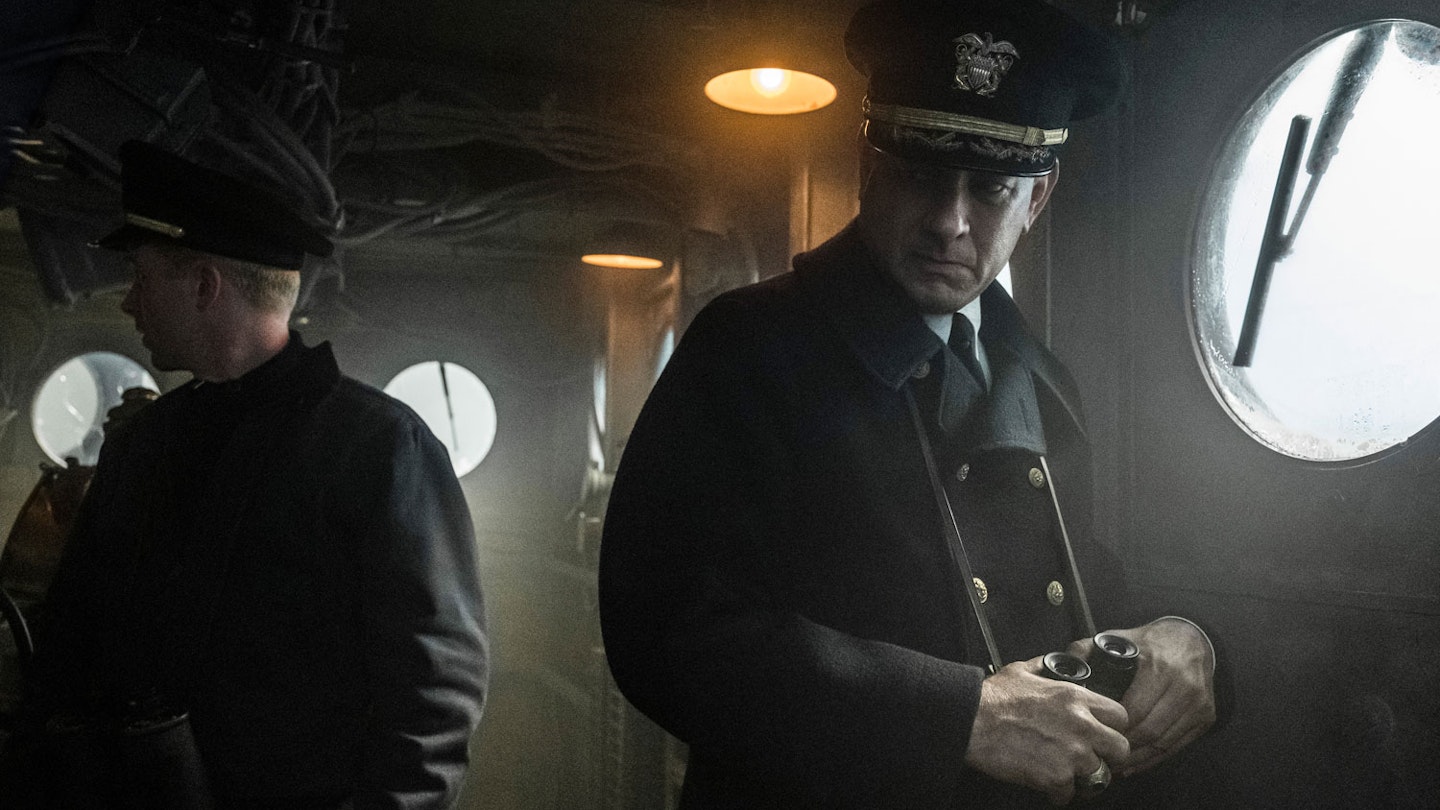
After an-on-the nose prologue and a flashback to Krause sharing Christmas presents with girlfriend Evie (Elisabeth Shue) — she gets a dopey Christmas decoration, he gets monogrammed slippers — the film throws us into the heat of the battle with Krause and his crew immediately fending off an attack from a German U- boat. Not spoon-feeding the audience, Hanks’ script admirably throws a lot of naval jargon at you and hopes you’ll stay afloat. This sustained action sequence sets the template for the action to follow — close-ups of Hanks looking out of a window; a tumultuous CGI sea; lots of scurrying around in confined spaces; and a percussive insistent score which includes a whiny musical motif every time a German sub appears — but it feels fresh to have the cat-and-mouse antics of a ship vs. sub chess game played out above water for a change. And don’t worry, Greyhound does have the Ping! Ping! Ping! sounds due any WWII movie set on the high seas.
The film is peppered with telling titbits of WWII detail.
The subsequent action plays out over the next 24 hours as Krause and co have to escort the convoy to Liverpool. Rather than overblown heroics, the focus here is on the day-to-day realities faced by these men. So we get faulty equipment (windscreen wipers, sonar), a fuel and depth-charge shortage, an oil tanker about to blow and a near-collision with a U-Boat. You can see the effect Hanks and director Aaron Schneider, whose last directorial effort was 2009s Get Low, are going for — an immersive, no context tour-of-duty onboard a besieged warship — but it doesn’t have that filmmaking excitement of, say, Das Boot. You rarely feel Hanks and co are actually at sea and the film lacks the tactile texture to make the interior of the ship a character in itself.
Still, there are telling top shots of the US vs. Germany battle that graphically bring the combat to life — at one point the camera heads dramatically from the battle to sweep up into the sky to see the Northern lights. The film is peppered with telling titbits of WWII detail; the Germans use a decoy device called a pillenwerfer to mess with the onboard US sonar; the slick of oil that reveals they hit their sub-aqua target; the Germans taunting the Americans by hacking into the comms system (“The grey wolf is so very hungry”). There is also a hint here of the different kind of War film Greyhound might have been: as Krause presides over a burial at sea, there is a distinctly human moment when the body refuses to slide gracefully into the ocean.
Indeed, it is humanity that is missing here. Characters are introduced but disappear. Hanks is surrounded by a clutch of young American actors playing various Ensigns and Boatswains, but none of them register in any meaningful way. Stephen Graham as Kraus’ right-hand man similarly has little to do except draw straight lines with a ruler, but scores in a debate about whether a distress signal will reveal their frailties to the Germans. But the biggest problem is Krause himself. If Krause has inner conflicts about his decisions, neither Hanks the writer or actor articulates them in any meaningful way. Hanks is always watchable, but Krause remains impenetrable. if the characters had been given a little more time to breathe and interact, Greyhound might have earned a 21-gun salute.
